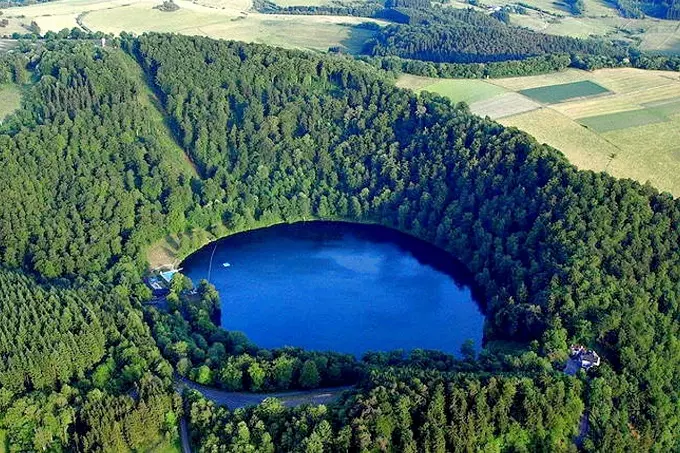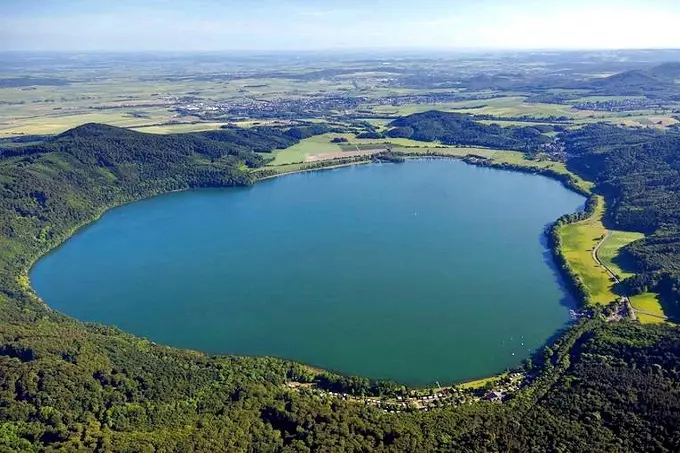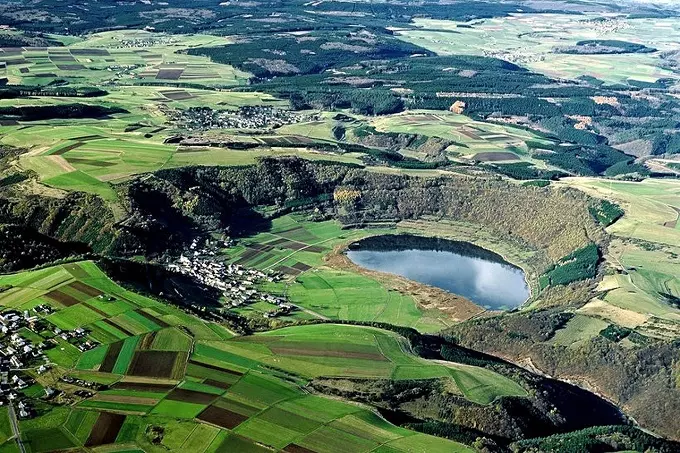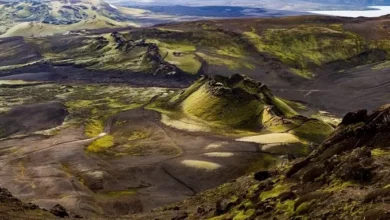Germany’s “fire-breathing giants”

You probably haven’t heard that there are volcanoes in Germany, but they do exist. They are not, however, classic cones with smoking tops, like those in Iceland or Italy, but rather quite unusual volcanoes. Germany’s “fire-breathing giants” are carefully hidden from view in the depths of the lakes, which are located in an amazing place – the Eifel mountain range.
Even during the last ice age, the volcanoes in the Eifel massif in western Germany were very active. The last eruption, according to volcanologists, happened here only 13,000 years ago.
Today the area between the Rhine and Moselle rivers has over 20 volcanoes in the south of the massif. Some volcanoes lost their cone during the last eruption and became completely flat. But they are easy to spot among the surrounding scenery, as their vents are filled with water.

In the south of the Eifel massif, there are many round lakes with banks in the form of small shafts, which are called maars. These are the volcanoes, which are d isguised as lakes.
But the serene smoothness of the lakes and the green hills are only the appearance of tranquility. According to the latest science, these volcanoes are still active, and a violent underground life is boiling in the depths of the lakes. One of the signs indicating geological activity is the presence of the Andernach geyser, as well as the processes taking place in Lake Laacher see.
Laacher See has a diameter of 2 kilometers and is 53 meters deep. The basin is located in the vent of the Laach volcano, which last erupted about 13,000 years ago. The massive deposits of volcanic ash and the radius of their spreading allowed scientists to give this eruption a score of 6 on the volcanic activity scale.

This puts it on par with such world-famous volcanoes as Vesuvius and Krakatoa. Due to the last eruption of the Laach volcano, there was a cold snap, and it is with its activity that scientists connect the disappearance of ancient people from the region.
The top of the Laach volcano was destroyed during the eruption, and the resulting depression was eventually filled with water, but gas bubbles periodically rose to the surface of the lake, indicating the activity of the volcano. These are carbon dioxide and other compounds that are released from the volcano’s vent and sent to the surface.
In recent years, German scientists observing dormant volcanoes in the Eifel region have recorded an increase in the release of gases. This indicates that magmatic processes are intensifying, although experts believe that the Lach volcano is sleeping quite soundly.




